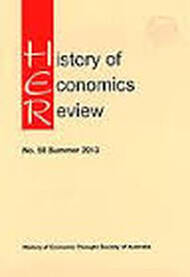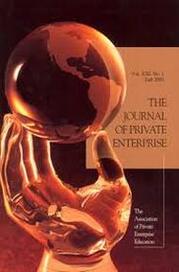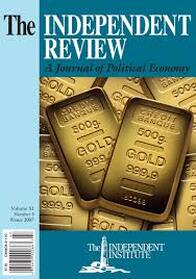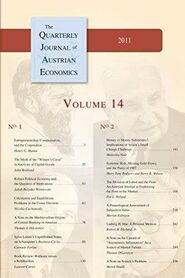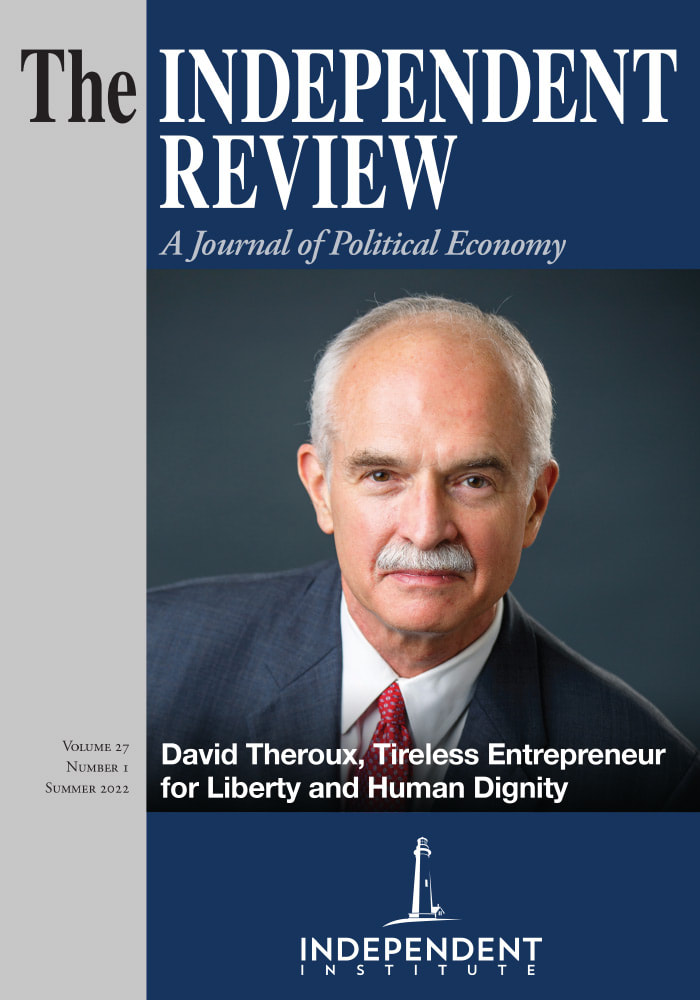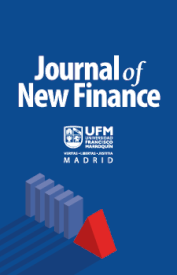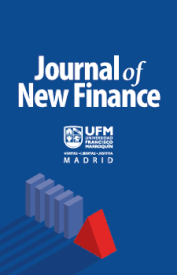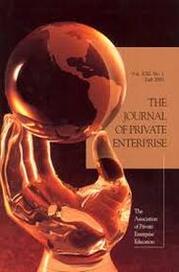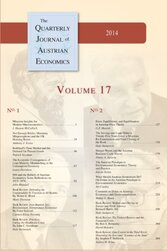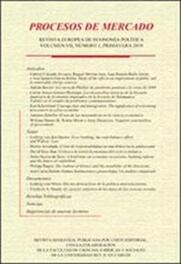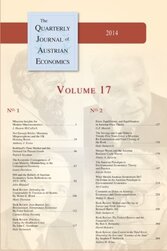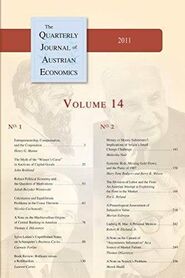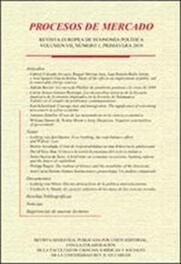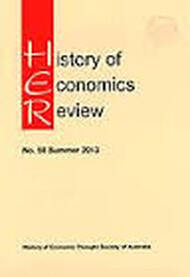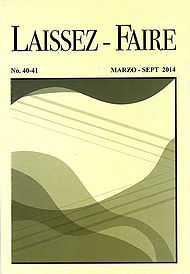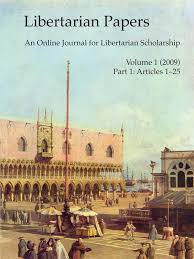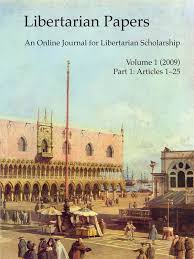Journal Articles
MACROECONOMICS, MONETARY THEORY AND ECONOMIC POLICY
Abstract: The series of banking failures in Buenos Aires Province in the 1800s was due not to a shortage of precious metals but to inefficient regulation, burdensome Treasury deficits and monopoly power. This is yet another historical example of how wars result in the degradation of monetary and banking institutions. Download Paper: "Monetary disorder in Buenos Aires (1822-1881)" Summer 2022. By Adrian Osvaldo Ravier. Filed Under: TIR, Volume 27, Number 1, pp. 23-35. |
Download Paper: "Friedrich Hayek On Monetary and Banking Systems Reforms" 2020. By Adrian Osvaldo Ravier. Filed Under: JNF, Volume 1, Number 2, pp. 1-20. |
Download Paper: "Book Review: Beyond Mechanical Markets – Asset Price Swings, Risk and the Role of the State, by Roman Frydman and Michael D. Goldberg, Princeton, Nj, Princeton University Press, 2011, 304" 2020. By Adrian Osvaldo Ravier. Filed Under: JNF, Volume 1, Number 3, pp. 1-12. |
Download Paper: "Fiscal Policy and Crowiding Out Effects in Capital Based Macroeconomics with Idle Resources" Winter 2015. By Nicolás Cachanosky and Adrian Ravier. Filed Under: JPE, Volume 30, Number 4, pp. 81-95. |
Download Paper: "The Natural Rate of Interest Rule" Winter 2014. By Adrian Osvaldo Ravier. Filed Under: QJAE, Volume 17, Number 4, pp. 417-441. |
Download Paper: "A Proposal of Monetary Reform for Argentina: Dollarization and Free Banking" Winter 2015. By Adrian Osvaldo Ravier. Filed Under: The Independent Review. A Journal of Political Economy, Volume 19, Number 4, pp. 397-426. |
Download Paper: "The Current 'Unsustainable Boom' in the Argentine Economy" Fall 2013. By Adrian Osvaldo Ravier. Filed Under: Procesos de Mercado, Vol. X, Num. 2, pp. 165-186. |
Download Paper: "Dynamic Monetary Theory and the Phillips Curve with a Positive Slope" Summer 2013. By Adrian Osvaldo Ravier. Filed Under: QJAE, Vol. 16, Num. 2, pp. 165-186. |
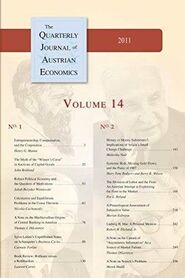
The Subprime Crisis, The Quaterly Journal of Austrian Economics (QJAE), Vol. 15, Num. 1, Spring 2012, pp. 45-74.
(with Peter Lewin)
Spring 2012. By Adrian Osvaldo Ravier. Filed Under: QJAE, Vol. 15, Num. 1, pp. 45-74.
(with Peter Lewin)
- Abstract: This article offers an analysis of the causes of the subprime crisis, explaining that it is not an isolated
- incident and that we should concentrate our attention on the Fed’s monetary policy and pressures on the banking
- system received from the U.S. government for flexible lending. It also critically examines the Fed’s exit strategy and
- fiscal policies that the government is taking to create jobs and stimulate the economy. We conclude that it should
- be no surprise if the U.S. economy should fall into a new cycle in the coming years, even though economics does
- not provides the tools to predict the precise timing of it.
Spring 2012. By Adrian Osvaldo Ravier. Filed Under: QJAE, Vol. 15, Num. 1, pp. 45-74.
Download Paper: "Rethinking Capital Based Macroeconomics" Fall 2011. By Adrián Osvaldo Ravier. Filed Under: QJAE, Vol. 14, Num. 3, pp. 347-375. |
|
Download Paper: "The principle of the non-neutrality of money. A response to Dr. Humphrey" Fall, 2011. By Adrian Osvaldo Ravier. Filed Under: Procesos de Mercado, Revista Europea de Economía Política, Volumen VIII, No. 2, pp. 263-284. |
|
Vienna & Chicago: friends or foes? A tale of two schools of free-market economics. Mark Skousen, History of Economics Review (HER), 46, The Australian National University (ANU), Summer 2007, pp. 190-194, ISSN 1037-0196. (with Osvaldo Schenone)
Abstract: This fascinating book starts out by telling us that Friedrich A. von Hayek, alarmed by the rapid advance of socialism and the horrors of the war, summoned the main liberal thinkers of the world to a meeting that was carried out in the small town of Mont Pelerin, Switzerland, in 1947. This encounter extended for ten days at the beginning of April of that year, with the attendance of 38 intellectuals. These individuals were predominantly economists, historians and philosophers. Prominent members of both the Chicago and the Austrian Schools attended the meeting to establish a society that would have the goals of preserving a free civilisation and opposing all forms of totalitarianism. Some of the most prominent intellectuals of the twentieth century subsequently became presidents of this society, including Hayek, Wilhelm Ropke, Bruno Leoni, Milton Friedman, George Stigler, James Buchanan, Gary Becker and Pascal Salin. Of course, not everyone at the first meeting at Mont Pelerin had identical ideas with respect to every detail that was discussed. However, there was a consensus that they were, essentially, pursuing a common objective. Mark Skousen’s book is a successful attempt to review this intellectual friendship between both schools of thought, pointing out the main issues that unite or divide them. Download Paper: "Vienna & Chicago: friends or foes? A tale of two schools of free-market economics. Mark Skousen." Summer, 2007. By Osvaldo Schenone and Adrian Ravier. Filed Under: History of Economics Review (HER), 46, The Australian National University (ANU). pp. 194-197. |
MISCELANEOUS
Download Paper: "The history of thought in the education of an economist". September, 2010, By Adrián Osvaldo Ravier Filed Under: Laissez Faire, Number 33, pp. 54-57. |
Download Paper: “Capitalism, Socialism and Public Choice” October 31, 2010, By Adrián Osvaldo Ravier Filed Under: Libertarian Papers, Volume 2 (2010) |
Today, we can denominate this the process of globalization, understanding as such the process that arises spontaneously in the market and acts by developing a progressive international division of labour, eliminating restrictions on individual liberties, reducing transportation and communication costs, and increasingly integrating the individuals that compose the “great society.” The purpose of the present essay is to attempt to deepen in this Hayekian thesis and approximate an explanation of why the said process could lead to world peace. To be consistent with Hayek’s works, we must conduct a multidisciplinary analysis of the process under consideration; analysis which must necessarily include a historical reference, an economic study, a legal approach, and finally the consideration of its cultural implications. Download Paper: “Globalization and Peace: A Hayekian Perspective” February 2, 2009, By Adrián Osvaldo Ravier Filed Under: Libertarian Papers, Volume 1 (2009) |
